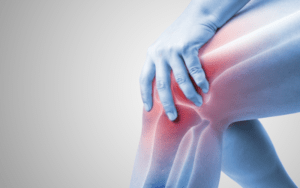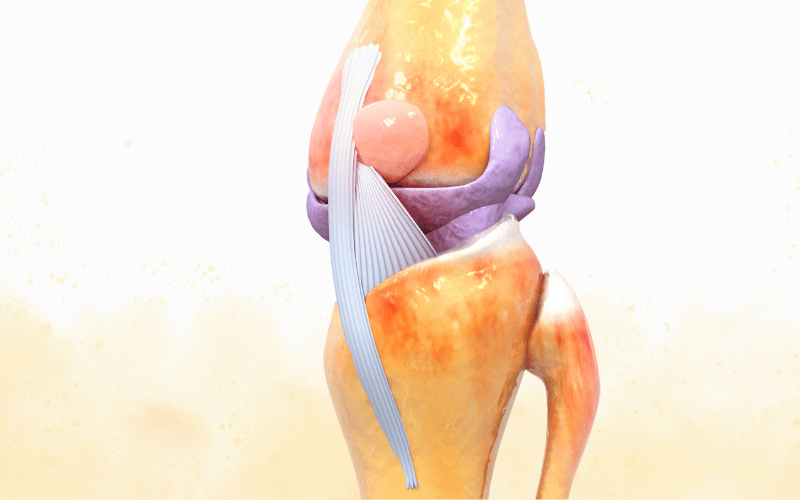Are you tired of living with nagging knee pain? Do you find yourself missing out on activities you love due to discomfort and limited mobility? Look no further, because we have an expert who is here to shed light on the causes and treatments for knee pain. Dr. Sana Ahmed Sayyad, renowned orthopedic specialist, shares her invaluable insights in this blog post. Prepare to gain a deeper understanding of what might be causing your knee pain and discover effective solutions that will help you regain control over your life. So sit back, relax, and get ready to say goodbye to knee pain once and for all!
Introduction: Brief Overview of Knee Pain and its Impact on Daily Life
Knee pain is a common complaint that affects people of all ages and can significantly impact daily life. It can range from mild discomfort to excruciating pain, making it difficult to perform daily activities such as walking, climbing stairs, or even standing for extended periods. According to the Centers for Disease Control and Prevention (CDC), more than one-third of adults aged 65 years and older report experiencing knee pain in the past 30 days.
The knee joint is a complex structure consisting of bones, cartilage, ligaments, tendons, and muscles that work together to support our body weight and allow us to move freely. When any of these components are damaged or injured, it can lead to knee pain. The most common causes of knee pain include osteoarthritis, injuries such as sprains or tears, overuse from repetitive activities like running or cycling, and underlying medical conditions like gout or rheumatoid arthritis.
The impact of knee pain on daily life can vary depending on the severity and cause of the pain. For some individuals, it may be a minor inconvenience that only occurs during certain movements or activities. However, others may experience chronic knee pain that significantly affects their quality of life and limits their ability to perform simple tasks.
One major impact of knee pain is difficulty with mobility. The knees bear a significant amount of our body weight when we stand or walk. Therefore, any injury or damage to this joint can make it challenging to move around comfortably. This limitation in mobility not only affects daily tasks but also makes it difficult for individuals to participate in physical activities they enjoy.
Knee pain can also have emotional effects on an individual’s mental well-being. Chronic knee pain can be frustrating and exhausting for many people who struggle with finding relief from their symptoms despite trying various treatments. This frustration may lead to feelings of anxiety, depression, and hopelessness, affecting their overall emotional state.
In addition to physical and emotional impacts, knee pain can also have financial implications. Individuals with knee pain may incur medical expenses from doctor visits, diagnostic tests, medications, and other treatments. The pain may also result in missed workdays or decreased productivity at work, leading to financial strain.
Knee pain is a prevalent condition that can significantly impact an individual’s daily life. It can affect mobility, mental health, and finances. In the following sections of this blog article, we will explore the causes and treatment options for knee pain with insights from orthopedic surgeon Dr. Sana Ahmed Sayyad to help you better understand this condition and find relief from your symptoms.
Meet Dr. Sana Ahmed Sayyad: Introduction to the author and her expertise in orthopedics.
Dr. Sana Ahmed Sayyad is a highly skilled and dedicated orthopedic surgeon with years of experience in treating various musculoskeletal conditions, including knee pain. She has earned a reputation for providing effective and personalized treatment plans for her patients, helping them to alleviate their pain and improve their overall quality of life.
After receiving her medical degree from a prestigious university, Dr. Sayyad underwent extensive training in orthopedic surgery through various residency programs and fellowships. She has also completed specialized training in sports medicine, allowing her to treat athletes and individuals with sports-related injuries effectively.
Apart from her impressive qualifications, what sets Dr. Sayyad apart is her compassionate approach towards patient care. She believes in building strong relationships with her patients by listening to their concerns, understanding their needs, and involving them actively in the treatment process.
Dr. Sayyad’s expertise lies primarily in the field of knee surgery, where she specializes in both non-surgical and surgical treatments for knee pain. Her vast knowledge and experience have helped numerous patients find relief from acute or chronic knee pain caused by various factors such as injury, arthritis, or overuse.
As an expert in orthopedics, Dr. Sayyad understands that each patient is unique and requires an individualized treatment plan tailored to their specific condition. She utilizes advanced diagnostic techniques like MRI scans or X-rays to accurately assess the root cause of knee pain before recommending any treatment options.
For non-surgical cases of knee pain, Dr. Sayyad employs conservative approaches such as physical therapy, medication management, or injections to reduce inflammation and promote healing without surgery’s need.
In cases where surgery is necessary to address underlying structural issues causing knee pain, Dr.Sayyad utilizes minimally invasive techniques such as arthroscopy whenever possible. Not only do these methods result in smaller incisions and less scarring, but they also offer faster recovery times for patients.
Dr. Sayyad’s dedication to her field is evident through her involvement in various research projects and publications related to orthopedic surgery. She also regularly attends conferences and workshops to stay updated on the latest advancements and techniques in the field of orthopedics.
With her extensive knowledge, experience, and compassionate approach towards patient care, Dr. Sana Ahmed Sayyad is a trusted expert in the field of orthopedics. Her expertise in knee pain treatment has helped numerous patients regain their mobility and live a pain-free life.

Understanding Knee Pain: Causes, symptoms, and risk factors for knee pain.
Knee pain is a common complaint among people of all ages and can greatly impact one’s daily activities. It is important to understand the causes, symptoms, and risk factors associated with knee pain in order to effectively manage and treat it. In this section, we will discuss these aspects in detail.
Causes: Knee pain can be caused by a variety of factors. One of the most common causes is an injury or trauma to the knee joint, such as a sprain, strain, or tear in the ligaments or muscles surrounding the knee. This could happen during sports activities, accidents, or even simple movements like twisting or bending. Another cause of knee pain is osteoarthritis, which occurs when the protective cartilage covering the ends of bones wears down over time due to aging or overuse.
In addition to these two main causes, other medical conditions such as rheumatoid arthritis, gout, and bursitis can also lead to knee pain. These conditions involve inflammation in the joints and can cause stiffness and discomfort in the knees. Obesity and excess weight can also put stress on the knees and lead to pain.
Symptoms: The symptoms of knee pain may vary depending on its underlying cause. However, some common symptoms include swelling around the knee joint, stiffness and difficulty moving the knee, clicking sounds when moving it, tenderness around the area of pain, and weakness in the affected leg.
Risk Factors: There are certain risk factors that may increase one’s chances of experiencing knee pain. These include being overweight or obese as mentioned earlier since excess weight puts more pressure on the knees. Engaging in high-impact activities such as running or jumping regularly without proper warm-up exercises can also increase your risk for developing knee pain.
Age is another factor that plays a role in chronic knee pain as our joints tend to weaken with age making them more susceptible to injuries and degeneration. Women are also at a higher risk than men for developing knee pain due to hormonal changes that can affect joint health.
Understanding the causes, symptoms, and risk factors associated with knee pain is crucial in effectively managing and treating it. It is important to seek medical attention if you experience persistent knee pain or have difficulty bearing weight on your knees. Dr. Sana Ahmed Sayyad can provide a comprehensive evaluation and personalized treatment plan tailored to your specific needs.
Types of Knee Pain: Differentiating between acute and chronic knee pain.
Knee pain is a common complaint that affects people of all ages and can be caused by various factors. It can range from mild discomfort to severe pain, and it can significantly impact an individual’s daily life. One crucial aspect of dealing with knee pain is understanding the different types of knee pain and how to differentiate between them.
There are two main categories of knee pain: acute and chronic. Acute knee pain refers to sudden onset or short-term discomfort in the knee joint, while chronic knee pain lasts for more than three months. Understanding the differences between these two types is essential for proper diagnosis and treatment.
Acute Knee Pain:
Acute knee pain often occurs due to injury or trauma, such as a fall, sports-related injury, or accident. It can also be caused by underlying conditions like arthritis or bursitis flaring up suddenly. This type of pain usually comes on quickly and may last for a few days to a few weeks.
Common symptoms of acute knee pain include swelling, stiffness, bruising, redness, warmth in the affected area, difficulty bearing weight on the affected leg, and limited range of motion. Depending on the cause of acute knee pain, it may require medical attention or self-care measures such as rest, ice therapy (to reduce inflammation), compression bandages (to support the joint), elevation (to reduce swelling), and over-the-counter medications for relief.
Chronic Knee Pain:
On the other hand, chronic knee pain tends to develop gradually over time and persists for more than three months. It may result from underlying medical conditions like osteoarthritis or rheumatoid arthritis or previous injuries that did not heal correctly.
Symptoms of chronic knee pain include persistent discomfort in one or both knees that worsens with physical activity but improves with rest; instability; popping/cracking sounds during movement; stiffness after prolonged periods of inactivity; weakness in muscles supporting the joint; tenderness; and swelling.
Treatment for chronic knee pain may include a combination of physical therapy, exercise, medication, lifestyle changes (such as weight management), and in severe cases, surgery. It is crucial to consult a healthcare professional to determine the underlying cause of chronic knee pain and develop a personalized treatment plan.
Understanding the differences between acute and chronic knee pain can help individuals better manage their symptoms and seek appropriate medical care. If you are experiencing knee pain that persists or becomes increasingly severe, it is essential to consult with a doctor for proper diagnosis and treatment. Remember that early intervention can prevent further complications and improve your overall quality of life.

Treatment Options: Non-surgical and surgical options for treating knee pain.
Knee pain can significantly impact an individual’s daily life and activities. Fortunately, there are various treatment options available for those suffering from knee pain. These treatment options can be broadly categorized into non-surgical and surgical methods.
Non-surgical treatments are often the first line of defense for managing knee pain. They aim to reduce inflammation, alleviate symptoms, and improve the overall function of the knee joint. Some common non-surgical treatment options include:
- Physical Therapy: A physical therapist will design a personalized exercise program to strengthen the muscles around the knee joint and improve its range of motion. Physical therapy also involves techniques such as manual therapy, ultrasound, or electrical stimulation to provide pain relief.
- Medications: Over-the-counter non-steroidal anti-inflammatory drugs (NSAIDs) like ibuprofen can help reduce swelling and relieve pain in the knee joint. In some cases, your doctor may prescribe stronger medications or steroid injections for more severe cases of knee pain.
- Assistive Devices: Using assistive devices such as a cane or a brace can help support the knee joint and reduce pressure on it while walking or performing daily activities.
- Weight Management: Excess weight puts additional stress on the knees, leading to increased pain and discomfort. Losing weight through a healthy diet and regular exercise can help alleviate knee pain.
On the other hand, if non-surgical treatments do not provide adequate relief from knee pain, your doctor may recommend surgery as a last resort option. The type of surgery recommended will depend on the underlying cause of your knee pain.
- Arthroscopic Surgery: This minimally invasive procedure involves inserting a small camera called an arthroscope into the knee joint through small incisions to diagnose and treat various conditions that cause knee pain such as torn cartilage or ligaments.
- Partial Knee Replacement: If only one part of your knee is damaged due to osteoarthritis or injury, your doctor may recommend replacing only that part of the joint, preserving as much healthy tissue as possible.
- Total Knee Replacement: In this surgical procedure, the damaged knee joint is replaced with a prosthesis made of metal and plastic components to recreate the function of a healthy knee joint.
It is essential to consult with an experienced orthopedic specialist like Dr. Sana Ahmed Sayyad to determine which treatment option is suitable for you based on your specific condition and medical history. Remember, early intervention and proper treatment can help alleviate knee pain and improve your quality of life.
Tips for Preventing Knee Pain: Lifestyle changes and exercises to prevent knee
Knee pain can be a debilitating condition that affects people of all ages and can greatly impact one’s daily routine. While there are various causes for knee pain, it is important to take preventive measures to avoid developing this issue in the first place. In this section, we will discuss some tips for preventing knee pain through lifestyle changes and exercises.
- Maintain a Healthy Weight:
One of the most significant risk factors for knee pain is being overweight or obese. The extra weight puts pressure on your knees, leading to wear and tear over time. This can result in conditions like osteoarthritis or tendonitis. Therefore, it is essential to maintain a healthy weight by following a balanced diet and incorporating regular exercise into your routine.
- Strengthen Your Muscles:
Weak muscles around the knee joint can also contribute to knee pain as they are unable to support the joint properly. By incorporating strength training exercises targeting your quadriceps, hamstrings, and glutes into your workout routine, you can build stronger muscles that will help protect your knees from injury.
- Stretch Regularly:
Stretching helps improve flexibility and mobility in the joints, reducing the risk of injury or strain on the knees during physical activities. Incorporate stretching exercises into your warm-up routine before any physical activity to prepare your muscles for movement.
- Proper Footwear:
The shoes you wear play an essential role in supporting your body’s weight while walking or running and protecting your joints from impact-related injuries like runner’s knee or shin splints. Invest in well-cushioned shoes with good arch support that fit properly to ensure proper alignment of the feet and reduce stress on the knees.
- Low-Impact Exercises:
High-impact activities such as running or jumping put a lot of pressure on the knees’ joints and can lead to discomfort over time if not done correctly. Opt for low-impact exercises like swimming, cycling, or using an elliptical machine to reduce the strain on your knees while still getting a good workout.
- Listen to Your Body:
Paying attention to any discomfort or pain in your knees is essential in preventing knee pain. If you experience any discomfort, stop the activity immediately and rest. Ignoring pain signals can lead to further damage and worsen the condition over time.
By incorporating these lifestyle changes and exercises into your daily routine, you can significantly reduce your risk of developing knee pain. However, if you experience persistent or severe knee pain, it is always best to consult with a medical professional for proper diagnosis and treatment.








